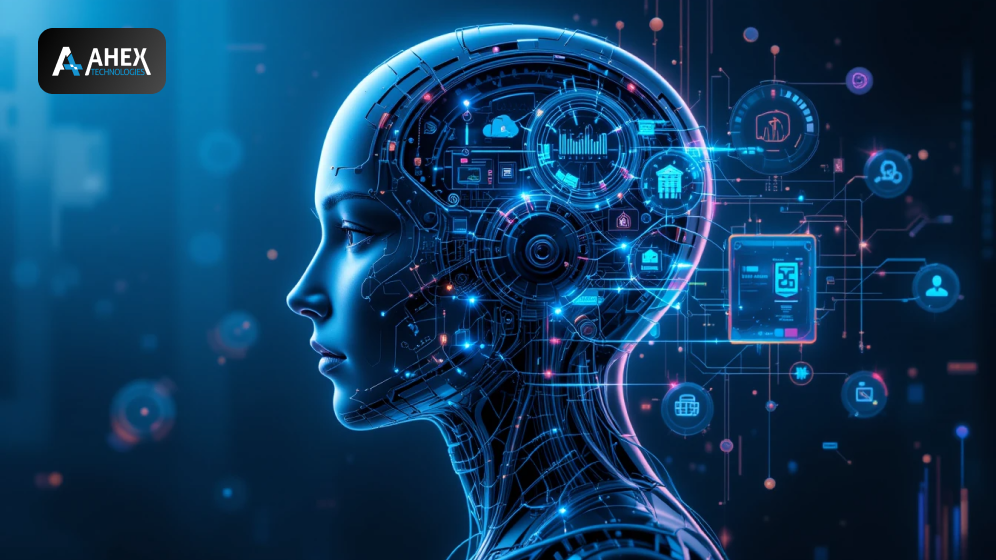
Artificial Intelligence (AI) is transforming how businesses operate, innovate, and scale. From conversational AI to predictive analytics and automation, AI models like GPT (OpenAI), Claude (Anthropic), WatsonX (IBM), Gemini (Google), and Azure AI are revolutionizing industries. But how do these AI models compare, and which one is right for your business?
This guide will help CXOs, developers, and tech leaders understand the capabilities of different AI models, their applications, and how they fit into modern AI-powered development.
1. What Are AI Models?
AI models are machine learning-based algorithms designed to process, analyze, and generate data. These models vary in capabilities, from text generation and image recognition to complex decision-making and automation.
Modern AI models fall into these categories:
- Large Language Models (LLMs) – Text-based AI like GPT-4, Claude, and Gemini
- Conversational AI – AI-powered chatbots like WatsonX Assistant
- AI for Business & Data – Enterprise AI like Azure AI, WatsonX
- Multimodal AI – Models that understand text, image, video, and voice
2. Popular AI Models and Their Use Cases
A. GPT (Generative Pre-trained Transformer) – OpenAI
Best for: Conversational AI, code generation, content creation
Used by: ChatGPT, Microsoft Copilot, AI-powered chatbots
Features:
- Generates human-like text for blogs, emails, and chatbots
- Can write code, scripts, and SQL queries
- Supports AI-powered customer support and automation
Example:
A FinTech startup integrates GPT-4 into its chatbot for real-time customer support and fraud detection.
B. Claude – Anthropic
Best for: Safe and ethical AI applications, summarization, reasoning
Used by: Enterprises for data security-focused AI
Features:
- Optimized for safety and ethical AI usage
- Stronger in summarization and reasoning tasks
- AI-powered legal and compliance automation
Example:
A legal firm uses Claude to summarize contract documents and assist with compliance automation.
C. WatsonX – IBM
Best for: AI-powered automation, enterprise AI solutions, predictive analytics
Used by: Enterprises for AI-driven workflows
Features:
- Integrates AI with enterprise applications like SAP and Salesforce
- Predictive AI for manufacturing, banking, and healthcare
- Custom AI models for businesses with WatsonX Studio
Example:
A bank integrates WatsonX to analyze customer data and prevent fraud.
D. Gemini – Google DeepMind
Best for: Multimodal AI (text, image, video), web search AI
Used by: Google Search, YouTube, AI-driven media platforms
Features
- Understands text, images, and videos together
- Optimized for real-world applications in e-commerce and content creation
- Google-powered AI search and recommendation systems
Example:
An e-commerce company uses Gemini AI to create automated product descriptions and visual recommendations.
E. Azure AI – Microsoft
Best for: Enterprise AI, cloud-based AI, AI-powered automation
Used by: Large corporations for AI in cloud computing
Features:
- Integrates AI into Microsoft 365, Azure, and enterprise apps
- Scalable AI for businesses running on cloud infrastructure
- AI-powered cybersecurity and risk assessment tools
Example:
A healthcare provider uses Azure AI to analyze patient data and predict disease patterns.
3. How These AI Models Are Transforming Industries
A. AI in Software Development
- Code generation (GPT, Claude, Azure AI) – AI assists developers by writing Python, Java, and SQL code.
- Automated debugging – AI detects bugs and vulnerabilities in software.
- AI-powered DevOps – AI helps with CI/CD pipelines and deployment automation.
B. AI in Customer Support
- Chatbots and Virtual Assistants (WatsonX, GPT) – AI handles customer queries and FAQs.
- Sentiment Analysis – AI detects customer emotions in chat and emails.
- AI-powered ticketing systems – AI automates customer request handling.
C. AI in Healthcare
- Medical Image Analysis (Azure AI, WatsonX) – AI detects diseases in X-rays and MRIs.
- AI-driven diagnosis – AI helps doctors predict patient risks.
- AI-powered drug discovery – AI accelerates medical research.
D. AI in E-Commerce
- Personalized shopping experiences (Gemini, GPT) – AI suggests products based on user behavior.
- Chatbots for customer support – AI automates order tracking and refunds.
- AI-driven inventory management – AI predicts demand and restocking schedules.
E. AI in Finance & Banking
- Fraud detection (WatsonX, Azure AI) – AI identifies suspicious transactions.
- AI-driven investment recommendations – AI helps in financial forecasting.
- Automated loan processing – AI speeds up loan approvals.
4. Choosing the Right AI Model for Your Business
Factors to Consider
- Business Needs – Choose an AI model based on your industry (e.g., GPT for content, WatsonX for banking).
- Data Security – Claude and WatsonX offer stronger privacy for enterprises.
- Integration with Existing Systems – Azure AI is best for Microsoft-based businesses.
- Scalability – Choose AI models that scale with growing business needs.
5. The Future of AI in Development
- AI models will become multimodal, understanding text, video, and voice together.
- AI-driven automation will replace manual business processes.
- AI will enhance cybersecurity by detecting cyber threats in real time.
- AI-powered software development will increase low-code/no-code adoption.
Conclusion
AI models like GPT, Claude, WatsonX, Gemini, and Azure AI are reshaping software development, e-commerce, customer service, healthcare, and more. Choosing the right AI model depends on your business needs, scalability, and integration requirements.
For businesses looking to implement AI-powered solutions, working with an AI development company that specializes in custom AI integrations can help maximize efficiency and innovation.
Ready to integrate AI into your business? Explore how AI models can transform your software, customer support, and business operations!








